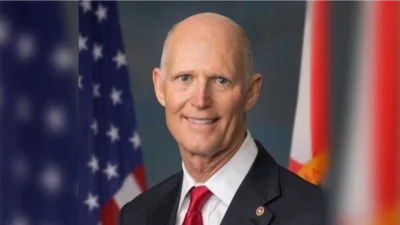It’s been more than 120 days since Newport News Nuclear BWXT- Los Alamos, LLC (N3B) took over as the new contractor for legacy cleanup at DOE’s Los Alamos National Laboratory (LANL). EM Update recently spoke with EM Los Alamos Field Office (EM-LA) Field Manager Doug Hintze and N3B President and Program Manager Nick Lombardo on the successful transition and plans for the year ahead.
Transition of the Los Alamos Legacy Cleanup Contract was completed on April 30, 2018. How would you assess the transition? Are there lessons that DOE and contractors can learn and apply at other EM sites?
Hintze: The transition was unique for LANL because it has never been done before. The National Nuclear Security Administration is the landlord for LANL. The local NNSA site office (NA-LA) and its management and operations (M&O) contractor worked closely with EM-LA and N3B. We had transition leads at a senior level for each of the four organizations and the team worked through issues in real time. The big challenges were hiring people and establishing business systems. At the end of the transition period, it was clear that standing up N3B was standing up a new company and we would be working through some growing pains in the months to come. Every organization and individual involved in the transition was fully committed to its success.
While there are always lessons to be learned, I would highlight that getting a jump on information technology is fundamental to communications and should have high priority. The other obvious one is people, people, and people.
Lombardo: This work was split off from the LANL M&O contract. As Doug noted, it is the first time in the lab’s 75-year history that more than one prime contractor has been doing work at LANL. And, I agree with Doug, in most transitions, all of the work and business processes are transferred from one contractor to another. The legacy cleanup work transferred to N3B was only about 10 percent of the total lab scope of work, but it is our single focus.
The cleanup work we’ve assumed from LANL is performed in a secure environment. While not unique to DOE, it does present some challenges that we’re working through. As a result, we have taken a very careful and deliberate approach to ramping up work. We want to ensure policies, procedures, and work processes are in place, and ensure employees can do quality work safely and in a disciplined way. We want them to take time to ask questions if something doesn’t seem right or seems unclear. Doing it right the first time is worth the wait.
How is the integration of two prime contractors (legacy cleanup and M&O) and two DOE offices going?
Hintze: During transition, N3B and the M&O contractor came to the conclusion that they would need services from each other. As a result, a number of agreements were developed and signed that covered a suite of activities. On the federal side and prior to transition, NA-LA and EM-LA developed a memorandum of understanding for the purpose of transferring work and defining roles and responsibilities. Additionally, a management steering committee was formed prior to transition to adjudicate issues and conflicts and set in place solutions for smoother operations. These pre-transition activities supported and encouraged contractor integration.
Lombardo: It’s going well. We implemented 10 service agreements/work authorizations that define work processes and function like contracts between N3B and the M&O. We coordinate those activities at the lowest level possible in each organization. The process has been working well with only a handful of issues that staff have had to elevate to senior management.
What has been accomplished so far?
Hintze: The contractor started work on April 30, 2018, and has implemented major business systems and met regulatory compliance. I said earlier that this was a unique transition because N3B had to establish an information technology system, email, payroll, emergency management, etc. These types of business systems are normally transferred to an incoming contractor from the exiting contractor, but this was not the case at LANL. N3B has hired, trained, and certified employees to operate various systems and facilities, to include a nuclear hazard category 2 facility. A major and highly visible program at LANL is the interim measure to contain and control the chromium contamination in the regional aquifer. N3B has been running the extraction, treatment, and injection system, and in partnership with my staff, has updated the public, stakeholders, and regulators regularly.
I expect N3B to raise their game and execute at a higher level in fiscal year 2019. We now have two years of experience under the new Consent Order (signed in June 2016) and the upcoming year should set us on a pace to get more aggressive with cleanup. Regarding the radioactive waste program, I am expecting our operations to be fully functional and for shipments to resume to the Waste Isolation Pilot Plant.
Lombardo: Since April 30, we have restarted treatment of the chromium plume that is edging near the LANL boundary, began a significant cleanup of a parcel of land in the light industrial area of Los Alamos, fully mobilized groundwater characterization efforts, including drilling additional groundwater sampling wells, and activated stormwater monitoring ahead of the monsoon season.
We’re also gearing up to resume shipments of LANL legacy transuranic waste to the Waste Isolation Pilot Plant in Carlsbad, New Mexico. All of our contact-handled transuranic waste team’s startup activities met inspection and surveillance requirements, and we are reaching readiness for mobile loading.
What are the subcontracting plans and outlook for the next year?
Hintze: The contract with N3B has requirements for up to 35 percent small business and to date N3B has met that challenge. On July 10, 2018, N3B held an industry day workshop to brief small business on opportunities to support cleanup activities. The workshop drew great interest and I am encouraged by the outreach to the small business community.
Lombardo: Said another way, we have a company goal to subcontract 45 percent of our work with 65 percent of that going to small businesses. We are currently surpassing that goal with 85 percent currently going to small businesses. Our focus is on local and regional communities, including substantive preferences to northern New Mexico businesses and local Native American pueblos. Going forward, we’ll be looking for subcontractors to help with some of our major work scope areas, including excavating, treating, packaging, and shipping waste; excavating soil and buried components; closing landfills; complying with ground and surface water permits; treating groundwater; and decontaminating and decommissioning facilities.
As Doug mentioned, we conducted an industry day workshop for potential subcontractors. It attracted 130 companies from more than 60 businesses, so there is significant interest.
Describe your approach to outreach to Los Alamos County and neighboring communities and tribal governments?
Hintze: EM-LA has three principles that drive our actions: safety, efficiency, and transparency. Specific to the question, outreach is conducted on a daily basis, whether we are responding to inquiries from reporters, conducting tours, or attending meetings with the public. It is a centerpiece to legacy cleanup. LANL has four neighboring pueblos that are linked to our cleanup program through an agreement-in-principle. Our government-to-government interactions are very important to getting our cleanup mission accomplished and meeting our obligations as the federal government.
Lombardo: Los Alamos National Laboratory is the major employer in northern New Mexico, and the cleanup work is a significant and important part of the lab. We have met with elected officials, community leaders, and groups in the region, and will continue those activities. Our outreach to the pueblo governments, of course, is through EM-LA as a government-to-government relationship, and we appreciate the opportunities we’ve had to meet with pueblo leaders.
A focal point of our community commitment is establishing an apprentice school modeled on our parent company’s apprentice school at the Newport News Shipyard. We’re supporting other community programs in education and economic development, including K-12 STEM outreach and other community events and activities in northern New Mexico, and will be expanding those efforts in 2019.
Source: U.S. Dept. of Energy, Office of Environmental Management








